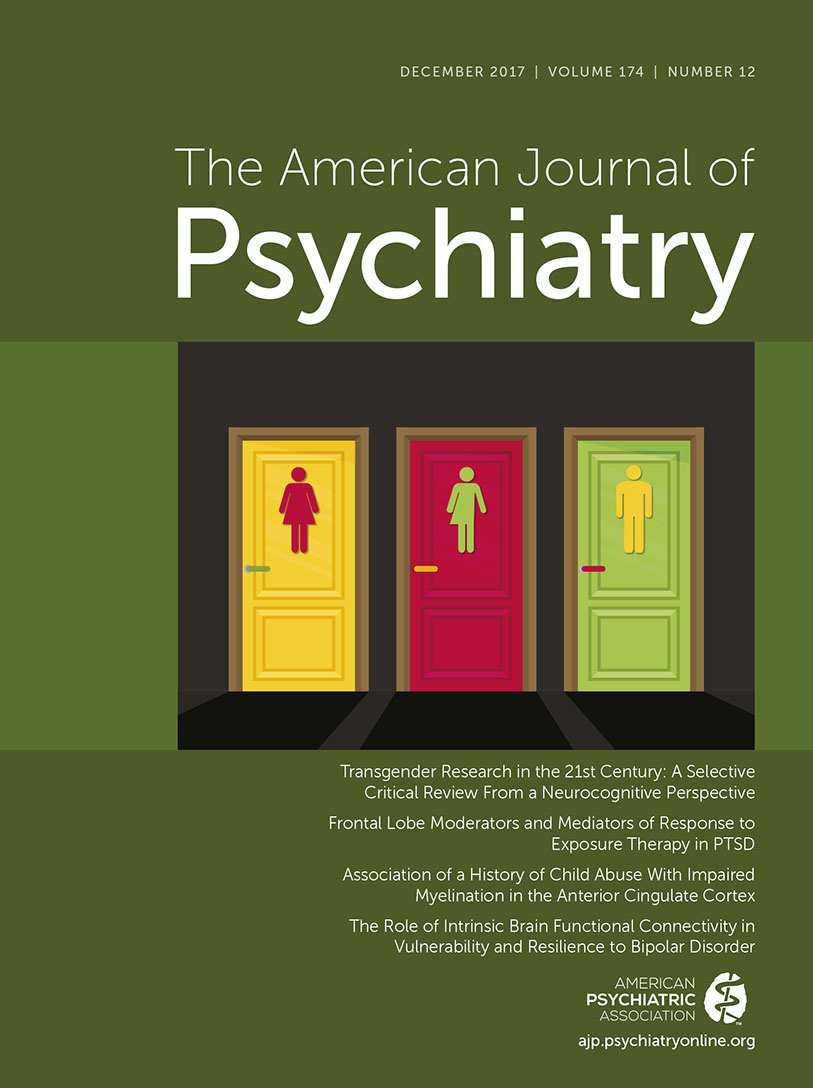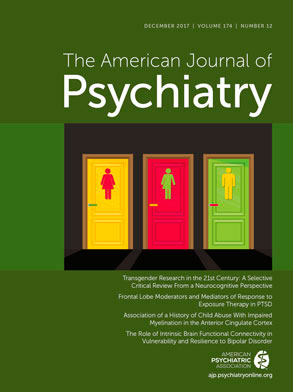T
o the E
ditor: Rosenheck et al. (
1) published findings in the September 2017 issue of the
Journal from the Recovery After an Initial Schizophrenia Episode–Early Treatment Program (RAISE-ETP) study regarding the receipt of Social Security Administration (SSA) disability benefits (Supplemental Security Income or Social Security Disability Insurance) in early psychosis. The authors found no difference between the coordinated specialty care treatment, NAVIGATE, and usual care. Overall, 9.0% (36/399) of participants received SSA disability benefits at baseline; 34.1% (124/363) of remaining participants obtained benefits during the 2-year study period. More severe psychotic symptoms and greater dysfunction predicted obtaining benefits.
We examine the rates of receiving SSA disability benefits among participants in OnTrackNY, New York State’s 19-site coordinated specialty care program. Inclusion criteria are a diagnosis of nonaffective psychosis (DSM-IV); other specified/unspecified schizophrenia spectrum or other psychotic disorder (DSM-5); onset of psychosis ≥1 week and ≤2 years prior; age 16–30; and New York State residence, regardless of insurance or income. OnTrackNY treatment length is expected to average 2 years. The institutional review board of the New York State Psychiatric Institute approved study procedures. Clinical staff report on receipt of SSA disability benefits and on scores on the Mental Illness Research, Education, and Clinical Center (MIRECC) Global Assessment of Functioning Scale (GAF) at admission and quarterly.
The Kaplan-Meier method was used to estimate rates of SSA disability benefits across time. Cox proportional hazards regression examined predictors of time until receipt of SSA disability benefits with each demographic and clinical covariate separately and then simultaneously for all clients who were not receiving SSA disability benefits at admission.
The sample includes 679 OnTrackNY enrollees admitted between October 2013 and June 2017. At admission, 2.5% (17/679) of clients were receiving SSA disability benefits. Kaplan-Meier estimates projected that 18.3% (95% CI=13.9−23.9) of clients followed for 2 years obtained disability benefits (
Table 1). In bivariate Cox regression analyses, individuals with lower (worse) MIRECC GAF occupational and social functioning scores had significantly greater risk of disability enrollment than individuals with higher scores (hazard ratio of 0.97 and 0.98, respectively; p<0.01 for both). Age, gender, race, ethnicity, and MIRECC GAF symptom scores were not significantly associated with disability enrollment. In multivariate analysis, lower occupational functioning was found to be associated with greater risk of disability (hazard ratio=0.98, p<0.05). Receipt of other cash assistance was low. Four percent (27/679) of participants received Temporary Assistance for Needy Families benefits at some point during participation; of those, 18.5% (5/27) also received disability.
Although OnTrackNY participants differ from RAISE-ETP participants, our findings show variations in disability enrollment among coordinated specialty care programs. Like participants in RAISE-ETP, we found that individuals with lower occupational and social functioning are particularly at risk for disability enrollment. Symptoms were not predictive. Our MIRECC GAF symptom measure may be less sensitive to symptom differences than the Positive and Negative Syndrome Scale used in RAISE-ETP.
Preventing disability is a goal of coordinated specialty care programs, and many young people with psychosis want to work. Coordinated specialty care programs must continue to help participants pursue meaningful work and education to help them achieve their goals.

